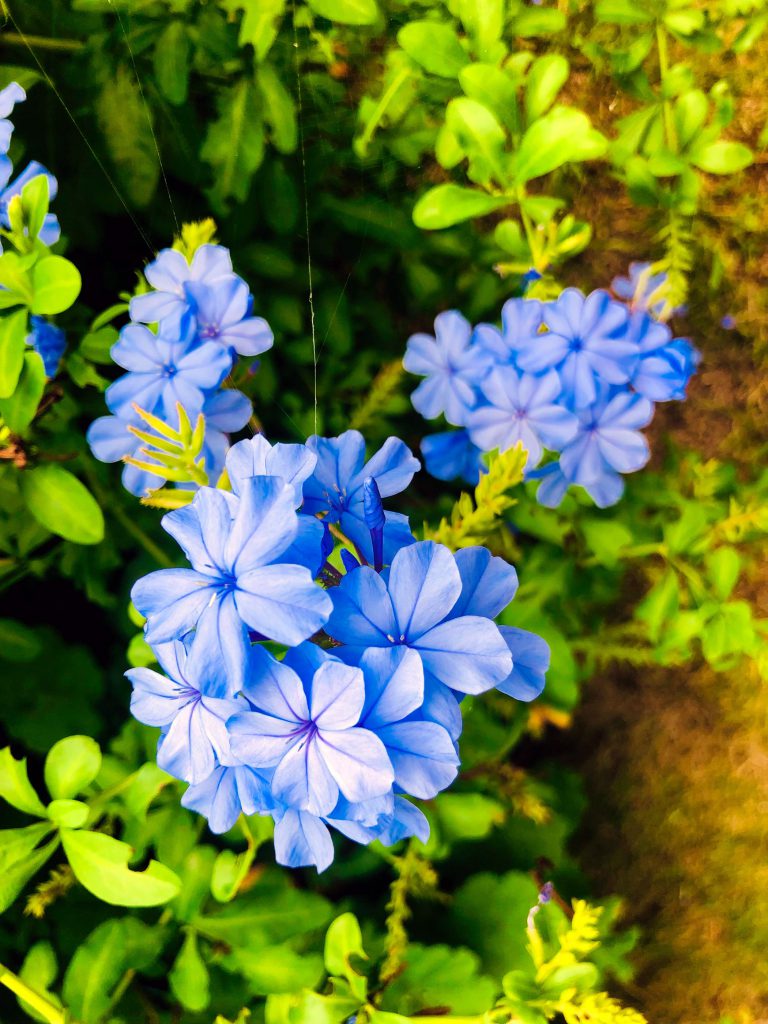
In haiku, it is often sung as Matsurika rather than Rurimatsuri. It is a vine native to South Africa. The flower word “always bright” is derived from the fact that the colorful blue flowers, which grow in new branches and grow in clusters with flower buds one after another, brighten the surroundings. Another flower word, “secret passion,” comes from the fact that when it finishes blooming, it produces mucus from the calyx and sticks to clothes and hair. It was introduced to Europe in 1818, and in the temperate regions of the Northern Hemisphere, it can be wintered in a greenhouse, transplanted to flower beds around May, and the flowers can be enjoyed from summer to late autumn. Recently in Japan, it is often seen in flower beds in parks and in home gardens.
俳句ではルリマツリよりも茉莉花(まつりか)としてよく歌われます。南アフリカ原産の蔓性の植物です。花言葉「いつも明るい」は、新しく枝を伸ばして次々と花芽をつけて房になって咲く、色鮮やかなブルーの花が周囲を明るくしてくれることからつけられました。もう一つの花言葉「ひそかな情熱」は、咲き終わると萼から粘液を出し、服や髪にくっついてくることからつけられました。ヨーロッパへの移入は1818年で、北半球の温帯では温室で越冬させ、5月頃に花壇に移植し、夏から晩秋にかけて花を楽しむことができます。日本でも最近、公園の花壇や家庭の庭にもよく見かけます。
